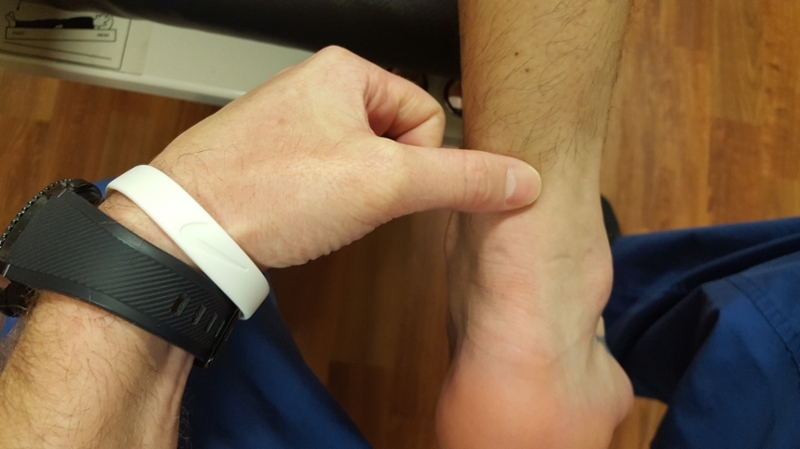Ankle Case 8 History/Physical
Rupture typically occurs when a sudden eccentric force is applied to a dorsiflexed foot with rapid acceleration or pivoting. Patients will often describe a feeling of a sudden and severe blow to the heel, sometimes accompanied by an audible snap. This often occurs during sports or while running. Patients will complain of an inability to run, climb stairs, push off the affected foot, or stand on their toes. Patients may still be able to walk on their toes with subtle tears.
- On exam the Achilles is best examined with the patient in a prone position with the feet dangling off the edge of the bed. Observe for swelling over the Achilles. Palpate for a defect in the Achilles tendon. There will be tenderness and often a loss of the normal taught cord-like tension. Compare to the unaffected side.
- Because the tendon may only be partially ruptured, inspect for asymmetric angle of foot declination or “angle of dangle” while the patient lies prone.
- Then, with the patient still prone, perform the Thompson test. Flex the knee to 90° and squeeze the patient’s calf. An intact Achilles tendon will fully plantar flex the foot when the calf is squeezed. If the tendon is ruptured, squeezing the calf results in minimal or no foot plantar flexion. Compare to the unaffected side.
These three components: calf squeeze, inspection for asymmetric angle of declination, and palpable defect constitute the Simmond’s Triad. It is nearly 100% sensitive for ruling out an Achilles tendon rupture.

Examiner palpating the Achilles tendon defect in the same patient.